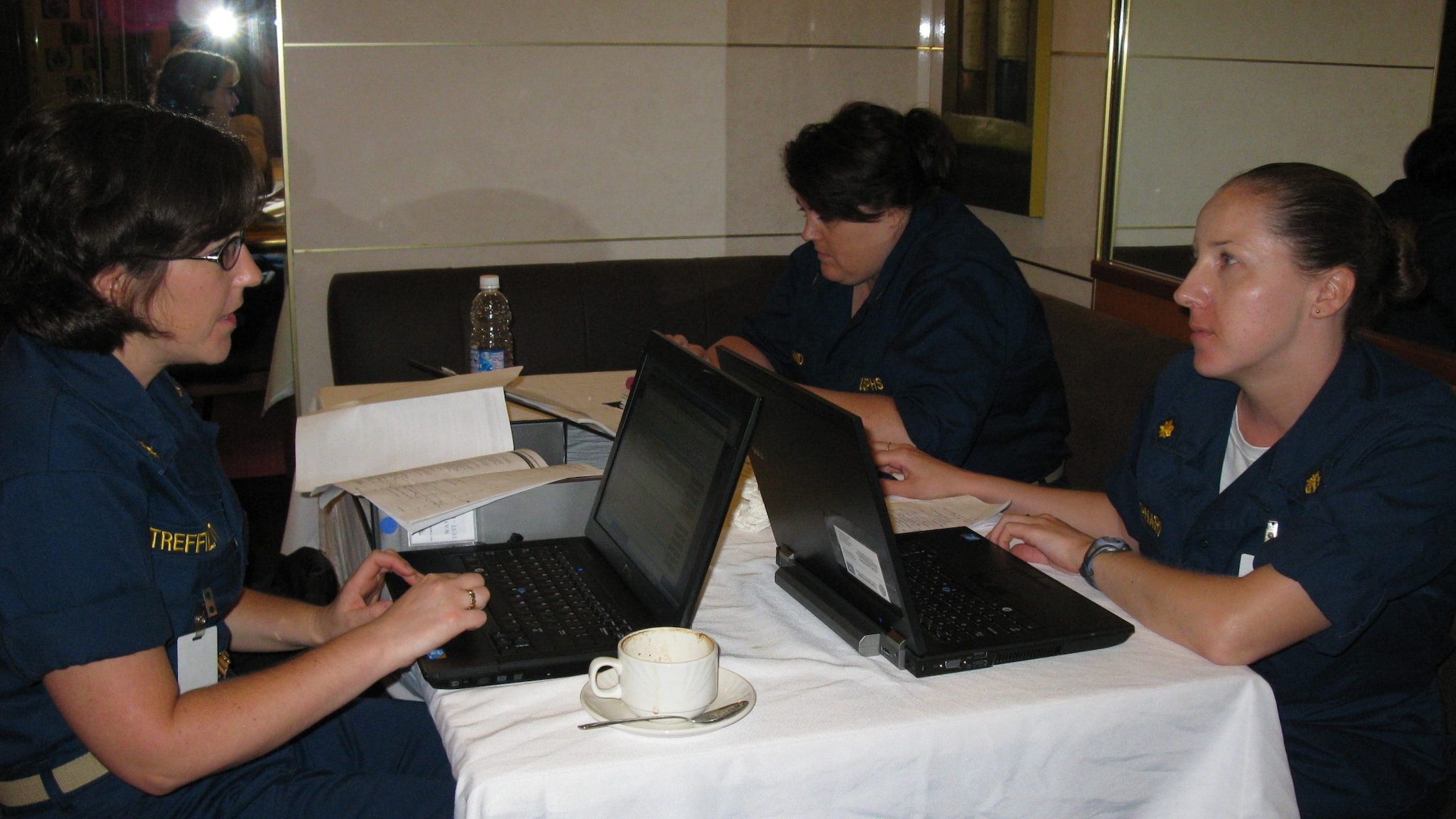At a glance
Learn what we do during investigations of acute gastroenteritis (AGE) outbreaks on cruise ships. AGE is a type of gastrointestinal illness. Common symptoms include diarrhea, muscle ache, headache, abdominal pain, and fever.

When we investigate AGE outbreaks
We investigate AGE outbreaks when 3% or more of the ship's passengers or crew members report being sick with AGE symptoms. We may also conduct an outbreak investigation if an unusual gastrointestinal illness pattern or characteristic is found, even if the illness rate is less than 3%.
We conduct outbreak investigations on ships sailing in the United States or within 15 days of arriving at a U.S. port. Other organizations handle outbreaks outside our jurisdiction.
Looking for information on specific outbreaks?
How we respond to outbreaks
During an outbreak investigation, we work with ship staff and the cruise line to determine the cause of illness. We ask for logs and records, including AGE surveillance logs. This helps us determine:
- How many passengers and crew are sick on the ship.
- When illness started and how long it lasted.
- How many people are sick on each day of the voyage.
- Symptoms of people who are sick.
Outbreak investigation goals
Our staff may board a cruise ship for:
- Epidemiologic assessment to look at the AGE spread or pattern, interview passengers and crew members, and analyze questionnaires with details on recent crew and passenger activities.
- Targeted environmental health assessment, including examining possible exposure pathways and reviewing the ship's outbreak response and sanitation procedures.
- These assessments are based on preliminary findings from the epidemiologic assessment.
- For example, if water is suspected as the source of illness, we give more attention to reviewing places on and off the ship where people could have been exposed to contaminated water.
- These assessments are based on preliminary findings from the epidemiologic assessment.
- Laboratory investigation to confirm the cause of illness (for example, norovirus). Medical staff may collect stool, vomit, or blood specimens to send to a land-based laboratory.
How cruise ships respond to outbreaks
Cruise lines are required to activate their outbreak prevention and response plans and make every effort to gain control of the outbreak. These plans:
- Indicate trigger points that initiate a ship's response to illness cases.
- Identify overall outbreak management strategies.
- Include detailed infection control procedures for each area of the ship.
Control measures
Common control measures taken by cruise lines and ships in response to outbreaks include:
- Increasing cleaning and disinfection procedures according to their outbreak prevention and response plan.
- Collecting stool specimens from AGE cases for testing.
- Isolating ill passengers and crew.
- Consulting with CDC about sanitation cleaning procedures and reporting ill cases.
- Notifying current passengers and crew of the situation onboard and encouraging prompt illness reporting and good hand hygiene.
We may also ask cruise lines to:
- Notify port authorities.
- Delay bringing passengers on board for the next voyage.
- Establish cleaning and disinfection procedures in terminal buildings.
